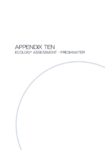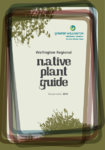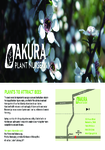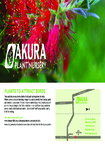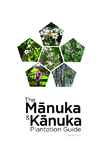-
Appendix 10: Freshwater Ecology Assessment
This document provides an ecological values and impact assessment of the modification of a culvert inlet at a site in Shelly Bay, Wellington.
alarm Published 09 Jul 2021 -
Native Plant Guide
This guide explains how you can use native plants to help our native ecosystems survive and flourish, and at the same time beautify your garden or your rural property. For…
alarm Published 08 Jul 2021 -
Plants to attract bees
The bee is incredibly important to our agriculture and horticulture industry for crop pollination. Approximately one third of the calories we eat and three-quarters of our food diversity rely on…
alarm Published 08 Jul 2021 -
Plants to attract birds
Trees and shrubs can provide shelter, food, and nesting places for birds. When planting consider choosing a range of plants to provide food (nectar, seeds, and berries) all-year-round. Provide a…
alarm Published 08 Jul 2021 -
Mānuka plantation guide
Mānuka and kānuka are fast-growing, robust plants ubiquitous in scrub, shrublands and forest margins throughout the North Island, and thrive in almost all land types from geothermal areas and wetlands,…
alarm Published 08 Jul 2021 -
Restoration planting guide for the Wellington Region
The Wellington regions ecosystems are unique and special. Our region has particular climates, terrain and soil types that together make our forests, wetlands, dunes and streamside areas different from other…
alarm Published 08 Jul 2021 -
Planting in clay soils
Clay soils are heavy to dig and cultivate. They drain slowly after rain. They tend to warm up slowly after winter, leading to delayed plant growth.
On the positive side clay…alarm Published 08 Jul 2021 -
Trees for shelter
Trees are often planted to protect property, crops or animals from wind or to create a screen for privacy. Shelterbelts can be planted as a barrier, as a wind filter,…
alarm Published 08 Jul 2021 -
Planting on coastal or other exposed sites
Trees in exposed locations are subject to buffeting and to the drying effects of wind. Trees in front line coastal locations are additionally exposed to the burning effects of salt…
alarm Published 08 Jul 2021 -
